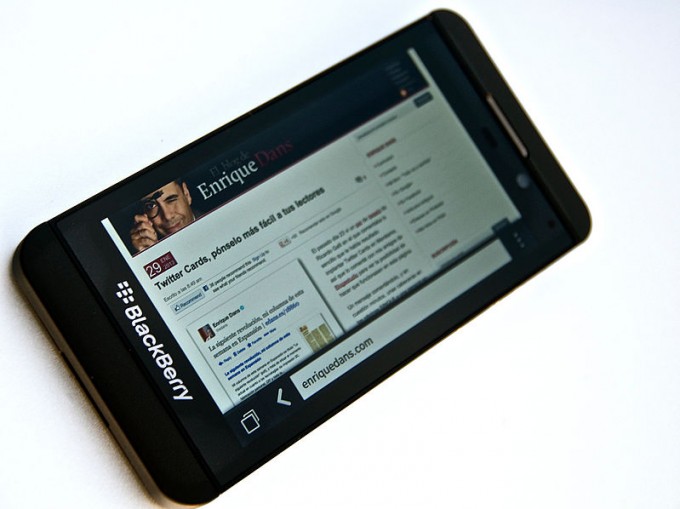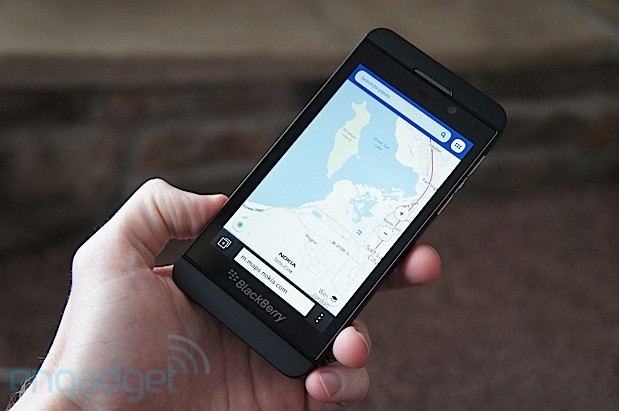
With the BlackBerry 10 operating system raising the industry bar for user experience, BlackBerry is once again showing why it is still a business smartphone competitor. While other brands have stretched a consumer paradigm to fit business needs, often compromising security in the process, BlackBerry has built on its solid business base to create a platform that accommodates consumers without sacrificing enterprise standards. BlackBerry’s new OS poises the company to entrench itself more deeply among business users while expanding its reach into the consumer market.
Balancing Business and Personal Usage

BlackBerry 10 user experience beats out Windows Phone, narrowly misses Android
One niche the BlackBerry 10 can potentially capture from rivals is the appeal of personal smartphones to business BYOD users. Since the rise of iPhones, BlackBerry has lost market share from users who want to bring personal phones to work. But businesses retain preference for BlackBerry in the workplace due to its superiority in areas such as security. A September 2012 Inc.com survey found 63 percent of workers at 200 American companies were still using BlackBerry.
BlackBerry 10 taps into this entrenched business preference while simultaneously courting BYOD personal users. BlackBerry’s latest operating system takes a new approach to Enterprise Mobility Management by introducing Balance, a security partition between personal and business applications and data. BlackBerry Balance enables IT departments to install a user work space where company data and email accounts are protected behind a wall of 256-bit AES encryption. Users can navigate among personal and business profiles by swiping apps pages, but files cannot be shared across the partition. This lets BlackBerry continue to function as a secure business device while enabling it to compete with personal smartphones in the BYOD space.
Streamlining User Experience

Banking on BlackBerry 10: Why a Canadian design shop committed to developing apps for a new OS
As for BlackBerry 10’s user experience, designers can check this out for themselves by downloading a free trial. The system’s UX approach aims towards supporting communication, interconnected applications and fast interactions.
BlackBerry 10 was built to help designers create a fluid user environment characterized by natural navigation. Information can be organized logically to facilitate anticipated user responses and provide customized menus when demanded, streamlining flow between what users see and do, and thus accelerating communication. To achieve this, BlackBerry 10 promotes a bigger view of each screen’s primary content. Secondary items for interacting with content can be kept to minimal number and size, with key items unobtrusively visible, and others lurking invisibly until awakened temporarily by a tap.
BlackBerry’s new operating system accelerates user workflow by enabling strategic shortcuts. Frequently repeated actions can be distilled into customized shortcut menus. For instance, if someone mainly uses their BlackBerry for sending emails to a specific recipient list, the system can detect this pattern and enable quick-send options.
BlackBerry 10 strives to make navigation easy and ergonomic. The operating system promotes sweeping gestures consistent with natural motion, supports placement of common actions in a lower-screen area accessible to thumb swipes, and encourages applications that can be done with one hand without changing grip.
Finally, BlackBerry 10 aims to provide an integrated communications environment. Phone, text messaging and email can all be integrated within a single interface, with common contact lists and message management.
Stacking up Against the Competition

Back to BlackBerry: a power user’s perspective
Overall, BlackBerry 10 represents a big leap forward for bridging the gap between traditional business applications and the personal smartphone BYOD market, though room for development naturally remains. Users accustomed to the traditional BlackBerry will find the interface intuitive and faster for business purposes than what the competition offers. Personal users expecting iPhone or Android features will want a bigger library of apps supported by a more dedicated cloud platform, which are two areas upgrades of the platform seem likely to address.



